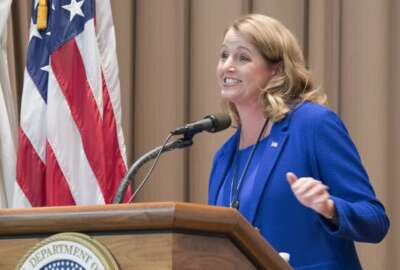There is a lot of excitement in the federal community to see which agencies will be first to get money under the Technology Modernization Fund (TMF).
If you remember, Congress created the TMF and allocated $100 million for fiscal 2018 as part of the Modernizing Government Technology (MGT) Act.
While the other piece to MGT, individual agency working capital funds, have produced less excitement—only three agencies committed to setting up new ones and nine said they will use existing working capital funds—the decision of where the first tranche of awards from the centralized fund will go is a hot topic of discussion at nearly every IT conference recently.
“The TMF Board reviews federal agencies’ submissions for modernization projects, common solutions, and recommends funding for projects that have the greatest impact, highest probability of success, a strong execution plan, and repayment model,” writes Federal Chief Information Officer Suzette Kent in a blog post on CIO.gov last Thursday.
Under the President’s Management Agenda, the IT modernization cross-agency goal has a target of launching “least three initial projects selected for funding through the Technology Modernization Fund” by the third quarter of fiscal 2018—which ends in June.
In the meantime, the Office of Management and Budget and General Services Administration (GSA), which are running the TMF program office, are encouraging agencies to continue to submit proposals to the board.
This seems to insinuate the amount of awards will be on the smaller side and there will be a steady stream over the course of the 2018 and into 2019.
In fact, GSA is hosting a TMF proposal workshop on June 8 to help agencies apply for TMF funds.
The Technology Modernization Fund Program Management Office and GSA’s Emerging Citizen Technology Office (ECTO) also hosted a webinar on May 22 detailing some emerging trends and factors from the first round of proposals for agencies to consider.
Elizabeth Cain, executive director for the Technology Modernization Fund, and Justin Herman, the lead for the emerging citizen technology program at GSA, provided the first real insight into what the board is looking for in proposals and why agencies make it to the second round of consideration.
From that webinar, here are the 10 facts I gathered and your agency should consider when applying for some of the $100 million fund:
- The TMF Board is interested in projects leveraging emerging technologies, including blockchain, robotics process automation (RPA) and artificial intelligence.
- The Board is looking at each proposal to answer two simple questions: “How does this investment effect American people and what is benefit to them?”
- Many of the initial project proposals were two pages long with a goal of getting feedback from board quickly. The proposals must include details about the citizen facing story, the desired technical solution and the payback model and current finances.
- The board is using a “Shark Tank” approach for agencies to present their proposals.
- There is no limit on the number of proposals an agency can submit. Some agencies have been submitting multiple proposals. The board moved multiple proposals from the same agency to phase 2.
- The sweet spot for proposals has been between $2 million-to-$10 million. The board is interested in seeing what can be accomplished in first year with the initial funding. That usually means it’s a project that the board can see the agency achieving benefits quickly from the infusion of money, whether it’s through better cybersecurity or service to the citizen. It also means board can fund proposals from multiple agencies.
- The board will do incremental transfers of funding to agencies that are tied to milestones outlined in their plan. Additional transfers will come as the program hits additional milestones.
- There has been a lot of confusion about how the pay back model will work. The Federal CIO’s office created frequently asked questions (FAQs) on the payback model. The first repayment must come within one year of the first transfer of funds, and the last transfer to close out the “loan” must come within five years of the last transfer.
- The board can work with an agency to reallocate payments and move repayments to another year in case it needs more time, and the board has a limited authority to expand repayments beyond five years with approval from OMB.
- The TMF program management office can help agencies develop their proposals for the board. Cain is not a voting member of board and offer impartial advice on acquisition or technical approaches.
“We are at a critical turning point in our government for technology transformation,” Kent said at a recent event sponsored by Foreign Affairs and the Advanced Technology Academic Research Center (ATARC) in Washington, D.C. “The mandate has been made clear not only by our administration, but by our lawmakers and most importantly the expectations of American citizens in comparing to things that are going on in industry. The use of technology is central to how products and services are delivered today and it needs to be central foundation what we are doing on the government side.”
Kent said TMF and working capital funds are part of the creativity that CIOs need to bring into the role to overcome the stagnant IT spending over the last four years.
This is why OMB is pressing so hard for agencies to take advantage of the working capital funds and central Technology Management Fund. It’s also why announcing the first set of projects, their milestones and ensuring they are successful may be even more important for the long term fulfillment of the MGT Act.
Copyright
© 2024 Federal News Network. All rights reserved. This website is not intended for users located within the European Economic Area.

